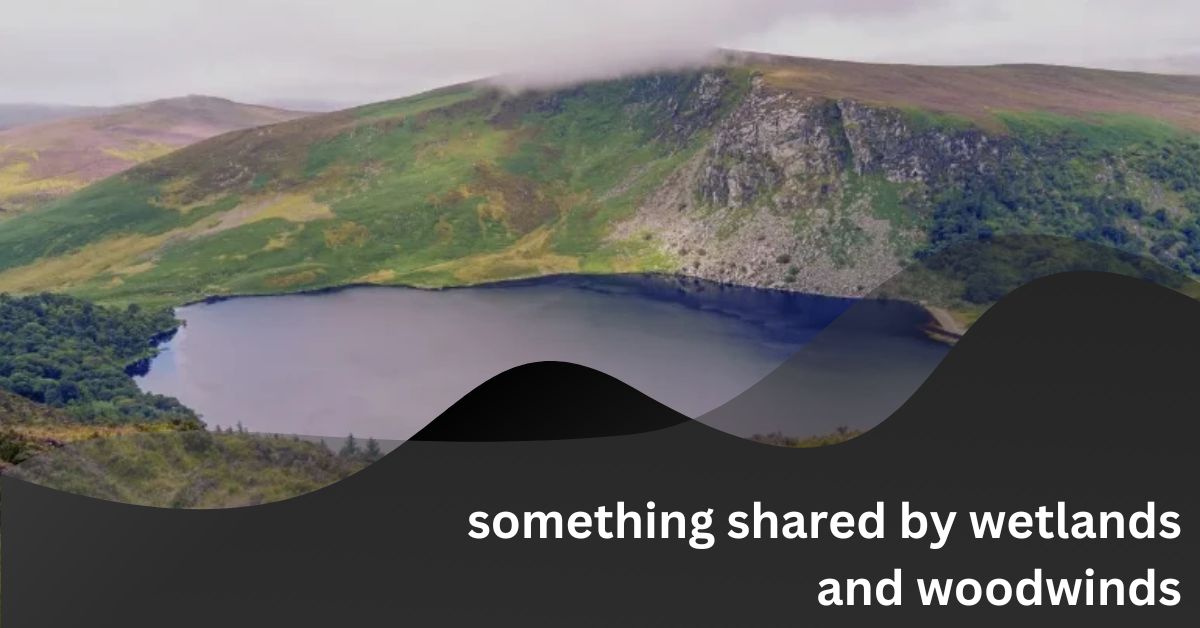Wetlands and woodwinds might seem worlds apart—one a crucial ecological environment, the other a category of musical instruments. Yet, these two areas intersect in surprising and meaningful ways. This article explores the fascinating connections between wetlands and woodwinds, uncovering how they influence each other and why their relationship is worth understanding.
The Role of Wetlands in Our Ecosystem
What Are Wetlands?
Wetlands are diverse ecosystems characterized by their water-saturated conditions. They include marshes, swamps, and bogs, each playing a vital role in the environment. Wetlands are often described as the “kidneys” of the landscape because they filter pollutants from water, control floods, and provide essential habitats for a variety of wildlife.
Importance of Wetlands
Wetlands support a rich tapestry of life. They are home to countless species of plants, birds, insects, and amphibians. For example, the dense vegetation in wetlands offers shelter and food for many animals, while the waterlogged soil supports unique plant species adapted to these conditions. Wetlands also play a crucial role in regulating the climate by storing carbon, which helps mitigate the effects of climate change.
Woodwinds: An Overview
What Are Woodwind Instruments?
Woodwinds are a family of musical instruments that produce sound by blowing air through a tube. They include the flute, clarinet, oboe, and bassoon. Unlike brass instruments, which use the player’s lips to create vibrations, woodwinds use reeds or an open hole to generate sound. Each woodwind instrument has its own distinctive sound, from the bright, clear tone of the flute to the rich, reedy sound of the oboe.
The Cultural Impact of Woodwinds
Woodwinds have a deep cultural significance and are used in various musical genres, from classical symphonies to jazz ensembles. Their versatility and expressive range make them a favorite among composers and musicians. Throughout history, woodwind instruments have been central to many musical traditions, reflecting the diverse ways in which people use music to express themselves.
The Unexpected Connection: Wetlands and Woodwinds
Reeds and Their Role
One of the most direct connections between wetlands and woodwinds is the use of reeds. Many woodwind instruments, such as the clarinet and oboe, rely on reeds to produce sound. These reeds are typically made from specific plants that grow in wetland environments. For instance, the oboe reed is often crafted from the wood of the Arundo donax plant, which thrives in wetland areas.
How Wetland Sounds Inspire Music
Wetlands are not just about flora and fauna; they are also rich in sounds. The croaking of frogs, the chirping of insects, and the rustling of reeds create a natural symphony. These sounds can inspire composers and musicians, influencing the way woodwind music is created. The textures and rhythms of wetland sounds can be reflected in musical compositions, blending nature with artistry.
Environmental Impact on Woodwind Materials
The health of wetlands has a direct impact on the materials used in making woodwind instruments. If wetlands are degraded due to pollution or climate change, the quality and availability of reeds can be affected. This, in turn, can influence the sound and availability of woodwind instruments. Thus, protecting wetlands is not just about preserving biodiversity—it’s also about sustaining the resources that contribute to musical traditions.
The Importance of Conservation
Why Protect Wetlands?
Preserving wetlands is crucial for maintaining ecological balance. They provide habitat for wildlife, regulate water flow, and support climate stability. Without healthy wetlands, many species would struggle to survive, and the ecosystem services they provide would be lost.
The Role of Musicians in Conservation
Musicians can play a significant role in wetland conservation. By raising awareness through their music and supporting environmental initiatives, they can help highlight the importance of these ecosystems. For example, composers can create works inspired by wetland environments, drawing attention to their beauty and significance.
How to Get Involved
There are various ways individuals can contribute to wetland conservation. Supporting organizations dedicated to preserving these ecosystems, participating in local conservation projects, and advocating for policies that protect wetlands are all effective actions. By being informed and engaged, everyone can help ensure that wetlands continue to thrive for future generations.
Conclusion
The connection between wetlands and woodwinds illustrates the intricate link between nature and human creativity. Wetlands provide essential resources for woodwind instruments, while the sounds of these environments inspire musical expression. Understanding and protecting this relationship is crucial for maintaining both ecological balance and cultural heritage. By valuing and conserving wetlands, we ensure that the harmony between nature and music continues to resonate.
FAQs:
What are the charges against Jarreth Plunkett and Dominique Harris?
Jarreth Plunkett and Dominique Harris face multiple charges, including severe criminal offenses related to the death of Robert Dean Maher. The specific charges include [insert specific charges based on the case].
Why are juveniles like Plunkett and Harris being tried as adults?
Juveniles may be tried as adults based on the severity of the crime, their age, and their prior criminal record. The decision is made to ensure appropriate punishment for serious offenses.
What is the public opinion on this case?
Public opinion is divided, with some advocating for harsh penalties and others supporting a more rehabilitative approach. Media coverage has influenced these views significantly.
How does this case impact the juvenile justice system?
The case highlights the ongoing debate about treating juveniles as adults and may prompt discussions about potential reforms to the juvenile justice system.
What are the psychological factors involved in this case?
Psychological factors such as mental health issues, socio-economic background, and family dynamics can influence the behavior of individuals involved in criminal activities.
What are the proposed legal reforms related to juvenile justice?
Proposed reforms include changes to sentencing practices, enhanced support for at-risk youth, and improved mental health resources.
How can similar tragedies be prevented in the future?
Preventative measures include community-based interventions, educational programs, and early identification of at-risk individuals.
What has been the role of the media in this case?
The media has played a significant role in shaping public perception and providing updates on the legal proceedings.
What are the broader societal implications of this case?
The case prompts a reflection on societal issues such as socio-economic disparities, the effectiveness of the juvenile justice system, and the need for community support.
How are the families of the victims and defendants coping with the situation?
The emotional impact on the families is profound, with ongoing support needed for both the victim’s family and the families of the accused.



